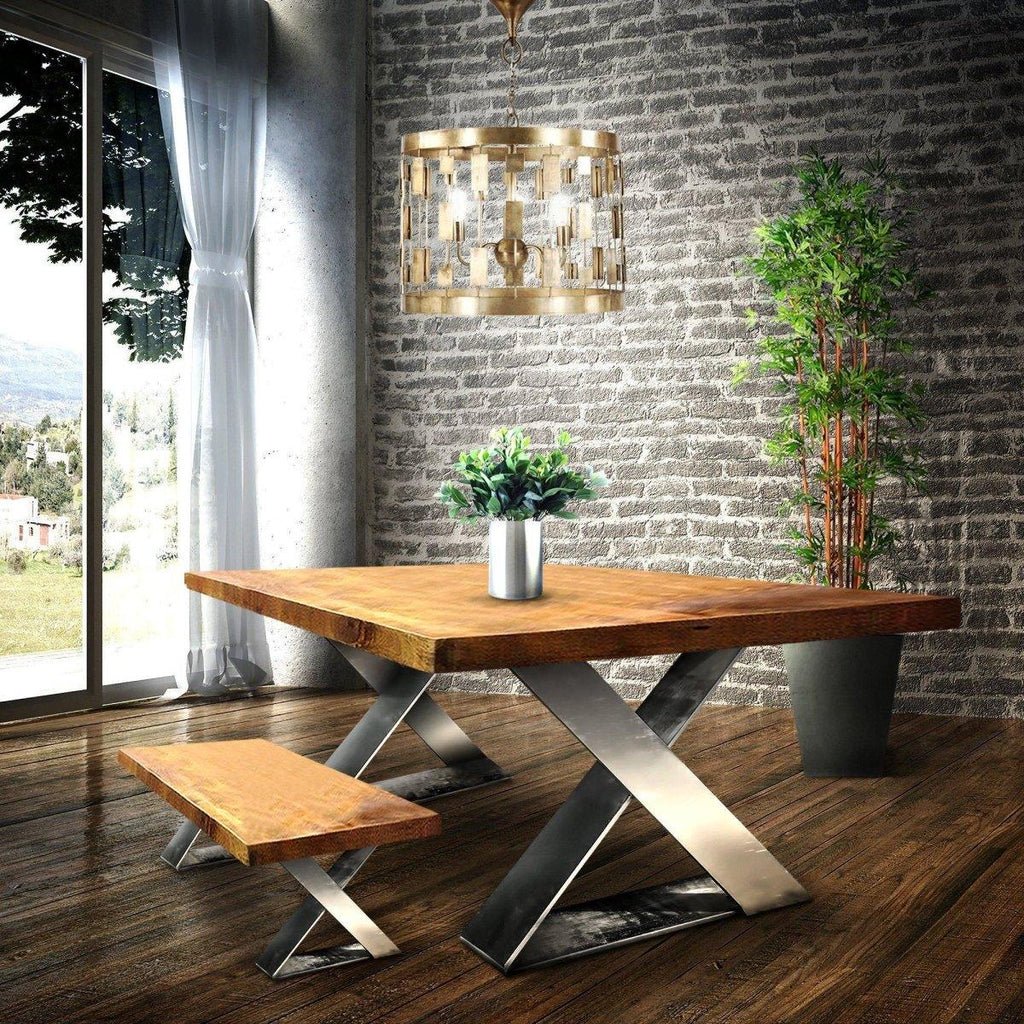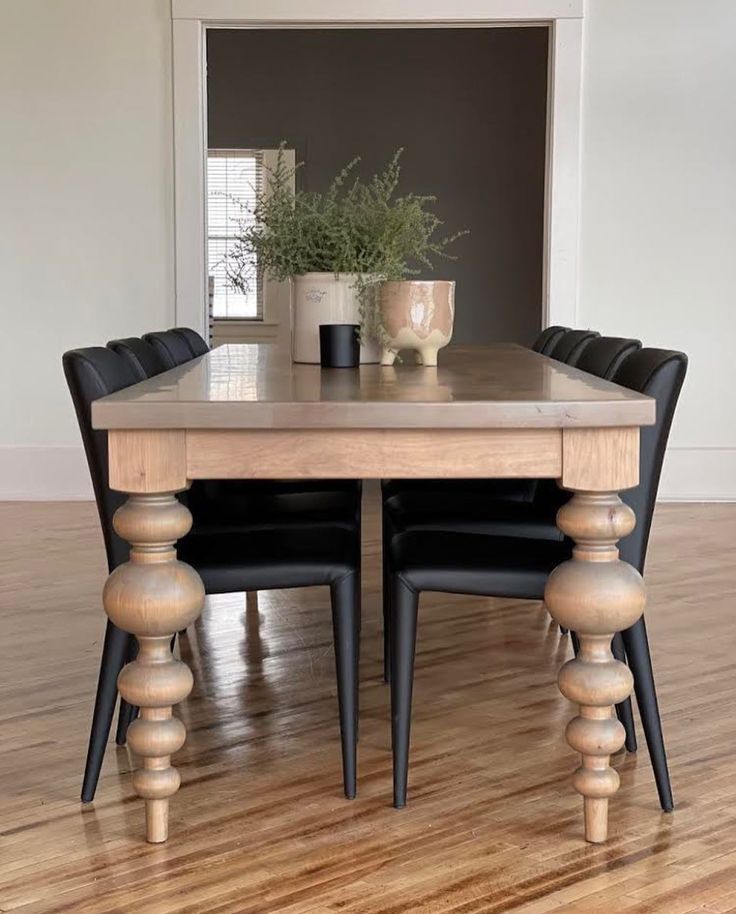Enhance Your Dining Room with Unique and Modern Dining Room Table Legs
Enhance Your Dining Room with Unique and Modern Dining Room Table Legs
Blog Article
From Conventional to Modern: Discover the Perfect Dining-room Table Legs for Your Design
While traditional layouts such as cabriole and turned legs evoke a sense of timeless elegance, contemporary designs like hairpin and geometric options provide a chance for striking aesthetic passion. As you take into consideration these components, the concern remains: how can you seamlessly integrate these varied leg styles to develop an unified eating experience?
Recognizing Table Leg Styles
The variety of eating area table leg designs can substantially affect both the aesthetics and functionality of the space. Each leg design contributes one-of-a-kind visual aspects and sensible functions, accommodating varied design preferences and usage demands. Understanding these styles is essential for picking the best table that lines up with your overall interior decoration vision.
For example, conical legs use a tidy, classic look that can boost a room's style, while pedestal bases offer security and make best use of legroom, making them excellent for smaller sized areas. Hairpin legs, a hallmark of mid-century modern design, present an industrial panache, enabling a ventilated, open feel. Trestle legs evoke rustic appeal, giving durable support and a feeling of eternity.
Furthermore, the option of materials plays a considerable role. Wooden legs can bring heat and structure, whereas metal options typically share a smooth, modern vibe. Ultimately, recognizing table leg styles is vital for creating a natural eating location that mirrors individual style while ensuring functionality and comfort. By thoughtfully considering these aspects, you can enhance both the aesthetic and functional charm of your dining room.
Traditional Table Leg Options
When selecting dining-room table legs, traditional options typically symbolize classic beauty and craftsmanship. These layouts show an abundant heritage and a dedication to top quality, making them ideal for those that appreciate timeless aesthetic appeals.
One of one of the most renowned standard leg styles is the cabriole leg, identified by its graceful rounded shape. This style commonly includes ornamental carvings and is most typically discovered in Queen Anne and Chippendale furniture. Another popular option is the transformed leg, which boasts a series of smooth, rounded forms that supply a traditional appearance while keeping security.
In addition, the straight leg, while basic, provides a basic and strong structure that can blend perfectly with a selection of tabletop designs. For those attracted to ornate describing, claw-and-ball feet legs stimulate a feeling of magnificence and can work as a spectacular focal point in any dining room.
Finally, pedestal bases, although not strictly legs, give an alternate standard alternative that allows for ample legroom and can be magnificently sculpted. Each of these standard leg designs adds to the total atmosphere of a dining area, weding feature with aesthetic appeal.

Modern Table Leg Styles
Modern table leg designs offer a varied series of designs that highlight tidy lines and cutting-edge products. These designs often prioritize capability while offering as striking focal factors within this a dining space. Minimal aesthetic appeals are widespread, with legs crafted from products such as metal, glass, and crafted wood, which add to visit a ventilated and contemporary feel.
One preferred design is the hairpin leg, characterized by its slim, tapered structure that gives stability without overwhelming the table top (dining room table legs). This style is usually discovered in mid-century modern-day furnishings and can effortlessly match various table forms. An additional trend is the use of geometric forms, where legs might handle unbalanced or angular kinds, including visual interest and a touch of artistry

Blending Designs for Distinct Spaces
Typically, house owners seek to create unique dining spaces that mirror their individual style by blending various layout components. This strategy permits the consolidation of diverse aesthetic appeals, causing a harmonious yet distinctive setting. For circumstances, matching a rustic wooden table with sleek, modern steel legs can produce a captivating contrast that elevates the area's total allure.
Furthermore, integrating vintage table legs with modern tabletops can evoke a sense of background while preserving a modern-day perceptiveness. Such combinations not just showcase private preference however also motivate creative thinking, permitting house owners to curate a space that really feels both personal and inviting.
Color plays an important duty in this blending process; selecting table legs that enhance or comparison with the existing color system can enhance aesthetic interest. For instance, whitewashed legs can soften the daring of a dark table surface, producing a well balanced aesthetic.
Tips for Picking the Right Legs
Selecting the right table legs is necessary for achieving both performance and aesthetic charm in your eating space. Begin by thinking about the total style of your space. Traditional settings profit from legs that include intricate carvings or turned designs, while modern rooms might call for sleek, minimalist styles.
Following, analyze the elevation and stability of the legs. dining room table legs. Typical table vary between 28 to 30 inches in height, so make sure the legs complement this dimension for convenience. In addition, durable products, such as hardwood or metal, can improve security and long life
Review the leg shape as well-- options consist of straight, tapered, or pedestal designs. Straight legs offer a classic look, while tapered legs can include a touch of style. Pedestal bases provide ample legroom and are perfect for smaller rooms.
Conclusion
In recap, picking the perfect dining-room table legs needs cautious factor to consider of both typical and modern styles. Conventional options such as cabriole you can try this out and turned legs supply ageless sophistication, while contemporary styles like hairpin and geometric forms give a modern touch. By balancing leg design, height, and product with the total design, a cohesive and inviting environment can be achieved. Inevitably, the selected table legs ought to reflect the wanted visual, improving the dining experience within the space.
The range of dining space table leg styles can dramatically influence both the aesthetic appeals and functionality of the area. Eventually, understanding table leg designs is important for creating a cohesive eating area that mirrors personal design while guaranteeing usefulness and convenience.One of the most legendary conventional leg styles is the cabriole leg, characterized by its stylish bent shape. Straight legs provide a timeless look, while conical legs can add a touch of sophistication.In recap, selecting the ideal eating room table legs needs cautious consideration of both modern-day and traditional styles.
Report this page